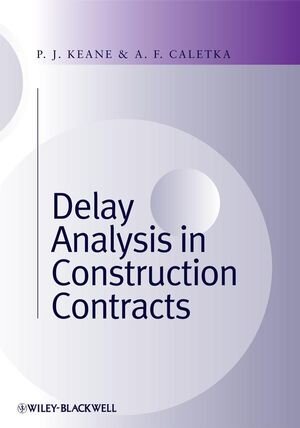
„This book provides an interesting insight into programming, planning and delay analysis terminology and techniques and istherefore a useful addition to the library of both students andpractitioners.“ (The Expert and Dispute Resolver, Spring2009)
„John Kean and Anthony Caletka are pukka analysts in that trickyarea of delays, programming and extension of time. I highlyrecommend their book Delay Analysis in ConstructionContracts. Both authors have extensive experience. Buythe book.“ (Building Magazine, February 2009)
"The book's stated purpose is to provide a practical guide forthose interested in schedule delay analysis. It provides a goodin-depth review of the most common delay analysis techniques. Anexcellent book, full of practical tips for the reader and verytimely in its publication. it is well worth cost and a good readfor anyone involved in schedule delay analysis." (CostEngineering, February 2009)
This book is a practical guide to the process of delay analysisand includes an in-depth review of the primary methods of delayanalysis, together with the assumptions that underlie the precisecalculations required in any quantitative delay analysis. Thetechniques discussed can be used on projects of any size, under allforms of construction contract, both domestic andinternational.
The authors discuss not only delay analysis techniques, but alsotheir appropriateness under given circumstances, demonstrating howcombined approaches may be applied where necessary. They alsoconsider problematic issues including 'who owns thefloat', concurrent delay, early completion programmes, anddisruption. The book, which is well illustrated, features practicalworked examples and case studies demonstrating the techniquescommonly used by experienced practitioners.
This is an invaluable resource to contractors, architects, engineers, surveyors, programmers and delay analysts, and will alsobe of interest to clients' professional advisors managingextension of time or delay claims, as well as construction lawyerswho require a better understanding of the underlying assumptions onwhich many quantitative delay analyses are based.







